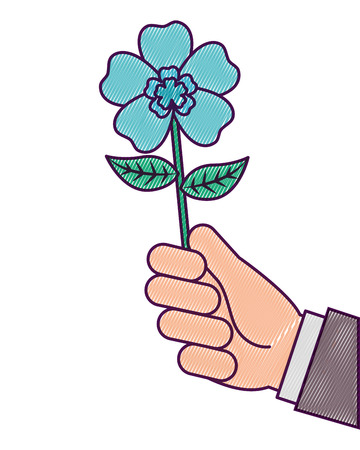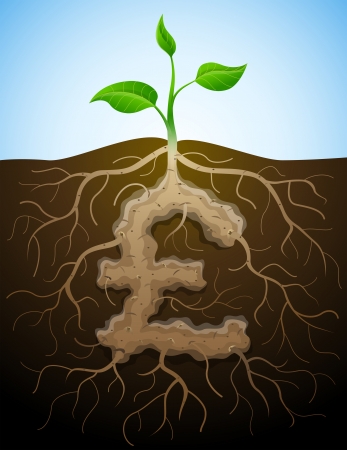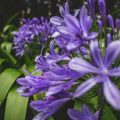1. Understanding Water-Wise Gardening
Water-wise gardening, also known as xeriscape gardening, is a landscaping approach that focuses on conserving water while maintaining a beautiful and functional outdoor space. This method is especially important in the United States, where regions like the Southwest face frequent droughts and water restrictions. But it’s not just for arid areas—water-wise gardening can benefit homeowners across the country by promoting sustainable practices and reducing utility bills.
Why Water-Wise Gardening Matters
The U.S. is home to a wide range of climates, from dry deserts to humid coastal areas. Each region faces unique water challenges, making efficient water use an essential part of responsible gardening. By adopting water-wise techniques, gardeners can:
- Reduce outdoor water consumption by up to 50% or more
- Lower monthly water bills
- Support local ecosystems with native and drought-tolerant plants
- Minimize runoff and erosion
- Create resilient landscapes that thrive even during dry spells
Key Principles of Water-Wise Gardening
Xeriscaping isn’t about sacrificing beauty—it’s about smart design. The principles below serve as the foundation for any successful water-wise landscape:
Principle |
Description |
|---|---|
Planning & Design |
Create a layout based on your local climate, sun exposure, and soil type to maximize efficiency. |
Soil Improvement |
Add organic matter to improve soil structure and water retention. |
Efficient Irrigation |
Use drip systems or soaker hoses to deliver water directly to plant roots with minimal waste. |
Appropriate Plant Selection |
Choose native or drought-tolerant plants suited to your region’s conditions. |
Mulching |
Apply mulch around plants to reduce evaporation, moderate soil temperature, and suppress weeds. |
Practical Lawn Areas |
Limit grassy areas to spaces that are actively used; opt for turf alternatives where possible. |
Maintenance |
Mow, prune, weed, and check irrigation systems regularly for optimal performance. |
Sustainable Landscape Design Benefits
A water-wise garden does more than save resources—it contributes to a healthier environment. These landscapes often attract pollinators like bees and butterflies, reduce greenhouse gas emissions by cutting back on lawn equipment use, and help recharge groundwater supplies through better infiltration. By embracing these eco-friendly practices, gardeners can play a role in building greener communities across America.
2. Climate Zones and Regional Water Usage
Understanding your local climate is key to creating a water-wise garden that thrives with minimal irrigation. The U.S. is home to a wide range of climates, from arid deserts in the Southwest to humid regions in the Southeast. These differences mean that not all water-saving strategies or plant choices work everywhere.
USDA Hardiness Zones: The Basics
The USDA Hardiness Zone Map divides North America into 13 zones based on the average annual minimum winter temperature. Knowing your zone helps you choose plants that can survive the local weather. But for water-wise gardening, it’s also important because it gives insight into how much rainfall and seasonal variation your garden might experience.
USDA Hardiness Zones Overview
| Zone | Temperature Range (°F) | General Region |
|---|---|---|
| 1-3 | -60 to -30°F | Northern Alaska, parts of Montana |
| 4-6 | -30 to 0°F | Northern Midwest, Northeast |
| 7-9 | 0 to 30°F | Southeast, Pacific Northwest, Mid-Atlantic |
| 10-13 | 30°F and above | Southern California, Florida, Hawaii |
Regional Climate Considerations
Your regions climate affects how much water your garden needs and when it needs it. Here’s a quick look at how different areas of the U.S. vary:
Regional Water Usage Patterns
| Region | Climate Type | Irrigation Needs | Water-Wise Tip |
|---|---|---|---|
| Southwest (e.g., Arizona, Nevada) | Hot and arid | High year-round | Use native desert plants like agave and cactus; install drip irrigation. |
| Southeast (e.g., Florida, Georgia) | Hot and humid with summer rains | Moderate; seasonal peaks in summer | Add mulch to reduce evaporation; water early morning. |
| Northeast (e.g., New York, Massachusetts) | Cold winters, mild summers | Low to moderate; mostly spring-summer | Select perennials suited for moist soils; group plants by watering needs. |
| Pacific Northwest (e.g., Oregon, Washington) | Mild and rainy winters, dry summers | Low most of the year; higher in summer | Collect rainwater during wet seasons for summer use. |
| Midwest (e.g., Illinois, Ohio) | Variable—cold winters, hot summers | Moderate; spikes during dry summer months | Add compost to improve soil moisture retention. |
The Connection Between Climate and Plant Choice
A plant that thrives in Southern California may struggle in Maine due to temperature swings or rainfall differences. By aligning your plant choices with both your USDA zone and regional climate patterns, you’ll reduce the need for supplemental watering and ensure a healthier garden overall.
Quick Tips:
- Check your USDA zone before buying new plants.
- Select drought-tolerant species appropriate for your region.
- Avoid overwatering by adjusting schedules based on weather patterns.
This localized approach ensures you’re not just saving water but also supporting a thriving ecosystem right in your backyard.

3. Essential Water-Saving Techniques
When it comes to creating a water-wise garden, its all about working smarter, not harder. By using a few tried-and-true techniques, you can significantly cut down on your water usage while still keeping your garden vibrant and healthy—no matter where you live in the U.S.
Mulching: Your Garden’s Moisture Blanket
Mulch is one of the simplest and most effective tools for conserving water. It helps retain soil moisture, keeps roots cool, and reduces evaporation. Organic mulches like wood chips, bark, straw, or compost also break down over time, improving soil quality.
Benefits of Mulching
| Type of Mulch | Main Benefit | Best Used For |
|---|---|---|
| Wood Chips | Slow decomposition & long-lasting coverage | Trees, shrubs, pathways |
| Straw | Lightweight & good for vegetable gardens | Raised beds, annuals |
| Compost | Adds nutrients while retaining moisture | Flower beds, mixed borders |
Improve Soil to Hold More Water
The healthier your soil, the better it holds onto water. In many U.S. regions—especially arid zones—amending your soil with organic matter like compost or aged manure boosts its ability to retain moisture and support plant roots.
Soil Amendment Tips
- Add 2–3 inches of compost to your garden beds each spring.
- Avoid compacting soil by walking on paths or using stepping stones.
- Test your soil every couple of years to check pH and nutrient levels.
Drip Irrigation: Targeted and Efficient
If youre still using sprinklers for all your watering needs, it might be time to switch to drip irrigation. This method delivers water directly to the base of plants where its needed most—minimizing evaporation and runoff.
Why Choose Drip Irrigation?
- Saves up to 50% more water than traditional sprinklers.
- Reduces weed growth by only watering desired plants.
- Can be automated with timers for consistent watering schedules.
Create a Smart Watering Schedule
Watering at the right time of day makes a huge difference. In most parts of the U.S., early morning is ideal because its cooler and less windy—so more water reaches the roots instead of evaporating into the air.
Best Practices for Watering Wisely
| Tip | Description |
|---|---|
| Water Early Morning | Makes the most of cool temps and low wind for deep watering. |
| Avoid Midday Watering | Heat causes rapid evaporation; less water gets to roots. |
| Water Deeply but Infrequently | Encourages strong root growth and drought resistance. |
By combining these essential techniques—mulching, improving soil, installing drip irrigation, and following a smart watering routine—youll make every drop count in your garden. These strategies are especially helpful in regions facing drought or strict water regulations.
4. Choosing the Right Plants
One of the most important steps in water-wise gardening is selecting plants that naturally thrive in your local climate. In the U.S., this often means choosing native and drought-tolerant species that require less irrigation and are more resilient to seasonal changes. Not only will this save water, but it also supports local ecosystems and pollinators.
Why Native and Drought-Tolerant Plants Matter
Native plants are adapted to your regions rainfall, soil, and weather patterns, which means they usually need less water, fertilizer, and maintenance. Drought-tolerant plants go a step further by thriving with minimal irrigation once established. These characteristics make them perfect for sustainable gardens across the country.
Regional Plant Recommendations
Here’s a curated list of drought-tolerant and native plants suited for different regions in the United States:
| Region | Recommended Plants |
|---|---|
| Southwest (e.g., Arizona, New Mexico) | Agave, Desert Marigold, Red Yucca, Penstemon, Apache Plume |
| West Coast (e.g., California) | California Poppy, Manzanita, Toyon, Lavender, Ceanothus |
| Southeast (e.g., Florida, Georgia) | Beautyberry, Yaupon Holly, Muhly Grass, Coreopsis |
| Northeast (e.g., New York, Massachusetts) | Echinacea (Coneflower), Black-eyed Susan, Joe Pye Weed, Switchgrass |
| Midwest (e.g., Illinois, Minnesota) | Purple Prairie Clover, Little Bluestem, Prairie Dropseed, Butterfly Milkweed |
Group Plants by Water Needs
A smart strategy in water-wise gardening is hydrozoning—grouping plants with similar water needs together. This ensures each plant gets just the right amount of moisture without overwatering others nearby.
How to Hydrozoning Effectively:
- High-Water Zone: Place near downspouts or low-lying areas; include veggies or tropicals.
- Moderate-Water Zone: Use for shrubs and perennials that need occasional watering.
- Low-Water Zone: Fill with native grasses and succulents that can survive dry spells.
Bonus Tip:
Add mulch around your plants to retain moisture and reduce evaporation—another simple way to enhance your garden’s efficiency while keeping it beautiful.
5. Tools and Technologies for Efficient Gardening
Water-wise gardening doesnt just rely on choosing the right plants and techniques—it also benefits greatly from using smart tools and modern technologies. Whether youre a beginner or an experienced gardener, integrating these water-saving devices into your routine can make a big difference in reducing water waste and keeping your garden healthy.
Smart Tools That Make a Difference
Here are some must-have tools and technologies that support efficient gardening practices across the U.S.:
| Tool/Technology | Description | Water-Saving Benefit |
|---|---|---|
| Soil Moisture Sensors | Devices that measure how much moisture is in your soil and notify you when its time to water. | Prevents overwatering by helping you water only when needed. |
| Rain Barrels | Containers that collect and store rainwater from rooftops for later use in the garden. | Reduces reliance on municipal water and makes use of natural rainfall. |
| Weather-Based Irrigation Controllers | Smart irrigation systems connected to local weather data to adjust watering schedules automatically. | Ensures optimal watering based on real-time weather, avoiding unnecessary irrigation during rain or cool days. |
| Drip Irrigation Kits | A system of tubing that delivers water directly to plant roots slowly and efficiently. | Minimizes evaporation and runoff, delivering water exactly where it’s needed. |
| Mulching Tools | Tools like mulching mowers or manual mulch spreaders help apply organic matter over soil. | Keeps soil moist longer by reducing evaporation and regulating temperature. |
Choosing the Right Technology for Your Garden
The best tools depend on your climate, garden size, and plant types. For example, if you live in a dry region like Arizona or Southern California, investing in a weather-linked controller and drip irrigation system can significantly improve efficiency. In wetter areas like the Pacific Northwest, rain barrels may be more beneficial to capture frequent rainfall for reuse during drier periods.
Smart Gardening Tip:
Combine multiple technologies—for instance, connect a soil moisture sensor with your smart controller to create a responsive irrigation system that truly adapts to your gardens needs. This layered approach helps ensure every drop counts.
User-Friendly Tech for Beginners
You dont need to be tech-savvy to get started. Many smart controllers come with user-friendly mobile apps that guide you through setup and monitoring. Look for systems labeled “EPA WaterSense Certified” as they meet high-efficiency standards recommended across the United States.
Quick Checklist: What You Might Need
- Soil Moisture Sensor (Wireless or Wired)
- Rain Barrel (50-100 gallons with spigot)
- Smart Irrigation Controller (Wi-Fi enabled)
- Drip Irrigation Kit (with timer)
- Organic Mulch & Spreader Tool
By incorporating these tools into your garden care routine, youll not only conserve water but also promote healthier plants and reduce maintenance time. Smart gardening starts with the right equipment—and its easier than ever to get started!
6. Designing and Maintaining a Water-Wise Landscape
Creating a water-wise landscape in the U.S. is all about blending beauty with conservation. Whether youre working with a small backyard in Arizona or a suburban lawn in California, smart design and regular upkeep can help you save water while keeping your yard vibrant year-round.
Plan Smart: Design With Water Efficiency in Mind
The first step to a successful low-water-use garden is thoughtful planning. Group plants by their water needs (a technique called hydrozoning), consider your local climate zone, and reduce turfgrass areas where possible.
Hydrozoning Example
| Zone Type | Water Requirement | Ideal Plants |
|---|---|---|
| High Water Zone | Frequent watering | Herbs, vegetables, container plants |
| Moderate Water Zone | Occasional watering | Lavender, daylilies, salvia |
| Low Water Zone | Drought-tolerant only | Sage, agave, ornamental grasses |
Use mulch to retain moisture and reduce evaporation. Gravel, bark, and compost are all great options that also add texture to your landscape.
Select Hardscaping Features Wisely
Add pathways, patios, or decorative rocks to minimize thirsty lawn space. Choose permeable materials like decomposed granite or pavers with gaps for water absorption. This helps with drainage and cuts down on runoff.
Maintain Through the Seasons
A water-wise garden still needs care throughout the year. Seasonal maintenance ensures your plants stay healthy without wasting water.
Seasonal Maintenance Tips
| Season | Main Tasks |
|---|---|
| Spring | Add mulch, check irrigation lines, prune spring bloomers |
| Summer | Irrigate early morning or evening, deadhead flowers, monitor for pests |
| Fall | Cut back perennials, plant native shrubs/trees, clean up debris |
| Winter | Mild pruning of dormant plants, protect roots with mulch in colder zones |
Sustainable Practices That Make a Difference
- Irrigation: Use drip systems or soaker hoses instead of sprinklers to deliver water directly to roots.
- Lawn Reduction: Replace sections of turf with native groundcovers or gravel beds.
- Pest Control: Encourage beneficial insects and use organic methods when needed.
A well-designed water-wise landscape is not only eco-friendly but also easier to maintain in the long run. By choosing the right plants, organizing them by needs, and adjusting care seasonally, you can enjoy a beautiful garden that respects both nature and your water bill.


